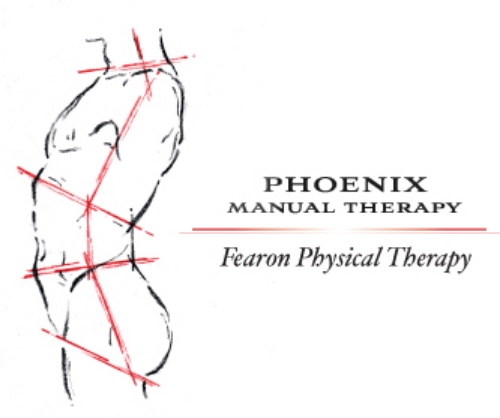The following is a response written by Tim Fearon in response to the article referenced below by Koppenhaver et al.
http://www.manualtherapyjournal.com/article/S1356-689X(14)00119-2/abstract
Dr Fearon in his own unique way levies his criticism at the findings of this study. Read on and comment!
Piano Capacity for Creating Melody Questioned
Researchers discover that the middle C key of a piano does not allow for the creation of melody. Players were not able to produce the reported "touch phenomenon for feathering a note”. Further information gained indicates that lighter depression of the key in a linear displacement lead to a lesser resonance than more forceful key displacement calling into question the reliability of this key stroke as to creating a consistent sound. Additionally, it was learned that there was no validity to the hypothesis that the middle C key of a piano would produce the same sound in all instances.
The results of this study have caused many researchers to call into question the further use of the middle C key in creating consistent melodies. The generalizability of the results may lead to similar conclusions about the remaining keys on the instrument and may have ramifications for the use of the piano by musicians who intend to create consistent melodies.
12 pianos were used in blinded trials with 6 different force applicators.
The pianos were placed in separate locations (London Symphony Hall, USC dormitory room, Sealy foam manufacturing warehouse, an empty garage at Ford Motor Co., Karastan Carpet Company, and the San Quentin Correctional Facility with 2 in each facility but separated by distance and/or insulation sufficient to preclude sound transference ).
All instruments were Steinway & Sons Grand Pianos, the remainder of the keys were fixated with duct tape to control for extraneous variables. For reliability the keys were fixated by building contractors with at least 8 years experience with the use of duct tape.
The force applicators were trained piano players who placed their index finger on the the middle C key with the other hands in the “home position” that they were accustomed to. The mean age of the players was 33 ranging from a BMI of 12.0-48.5 and physical stature ranging from 4’10” - 6”11”. For control purposes no bench was utilized.
Examiners recorded the sound created which was then played back by other examiners who were blinded & deaf. A criterion measure was compared with a mechanized force applicator to the key to compare the sounds created by the players to the force generated in a consistent fashion and these were found to have variance both from instrument to instrument and from the mechanized force applicator to players.
The conclusions are that the reported consistency of the middle C key is neither valid nor reliable. There has been some discussion that the possibility may exist that each of the players may have been able to produce a different sound if the entirety of the keyboard were freely moving and they were allowed to sit on their preferred stool or bench. Further discussion revolved around the operational definition of melody and whether the use of multiple keys may result in different outcomes but this hypothesis could not be tested for construct validity until the first question had been answered as there were far too many variables for control.
Further discussion regarding the allowance for the use of the secondary black keys and the foot pedals lead to an acknowledgement that the results may well have varied if the musicians were allowed to use all of the variables that they had learned to use concurrently.
Further research could focus on the adjacent keys, those little black keys and the use of windbag instruments.
The thing that bothers me most is the limited demonstration of understanding of the basic concepts.
1. PAIVM is a part of the whole examination where in a more specific question is now being asked (i.e. painful restriction in LS BB reported & observed now can we localized a participating element that may lend itself to change)
2. Relative mobility is only 1 aspect of this exam and not nearly as significant as reproduction of comparable symptoms ( see reliability studies on the sacroiliac joint with provocation and alleviation)
3. This would not be the exam of choice to determine hyper-hypo mobility
4. The control device generates nothing more than an assessment of stiffness on a load deformation curve with an individual in a prone position, with a ground force supplied by the table acting in an equal and opposite direction.
5.The control device offers no adaptation for the relative and variable contours of each subject and hence has no reliability for comparison to passive accessory movement.
6. The relative stiffness of human beings varies dramatically and the examiner does not use force to generate an assessment of behavior (60 N was selected based on extensive pilot testing and was found to be an appropriate maximal load that adequately challenged the spine)
7. The control device fails to reproduce the primary thing that the examiner does by comparing varied adjacent levels and movement as compared to the human subject in front of them.
The bottom line here is that they are doing research on examination that an examiner never does. The examiner does not assess biological stiffness, nor linear displacement and that is all that the indentation device can hope to do. It is operationally defined as a linear stepping motor.
One can only hope that the readers of this article will understand that the most generalizable statement is: “Additional studies should investigate whether manual assessment of stiffness relates to other clinical and bio-mechanical constructs, such as symptom reproduction, angular rotation, quality of motion, or end feel.”
TOF
Follow PMT on Twitter: @Phxmanual
Like us on Facebook: https://www.facebook.com/phoenixmanualtherapy/
Check out our Website for Upcoming Classes taught by clinician’s for clinicians: www.phoenixmanualtherapy.com
